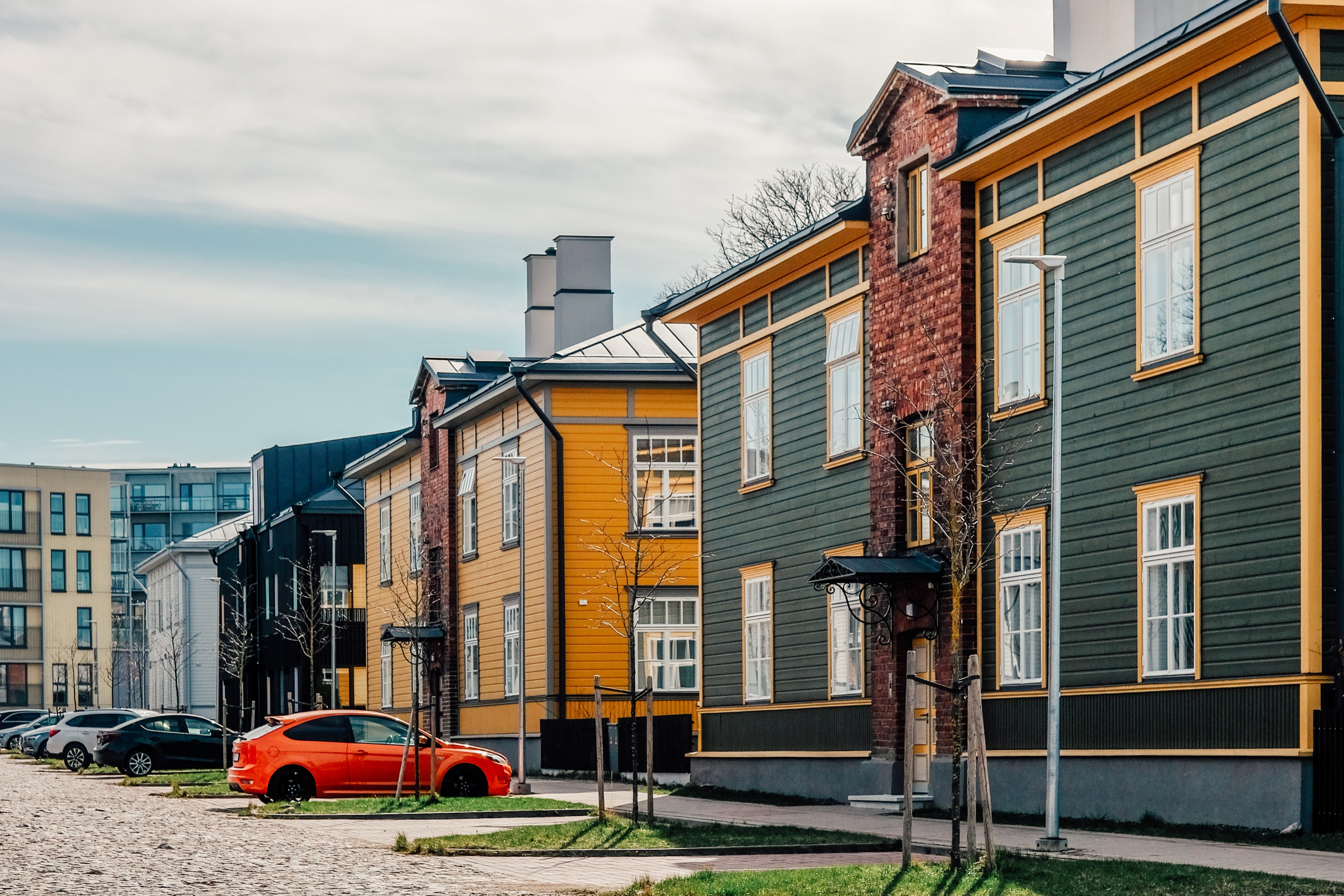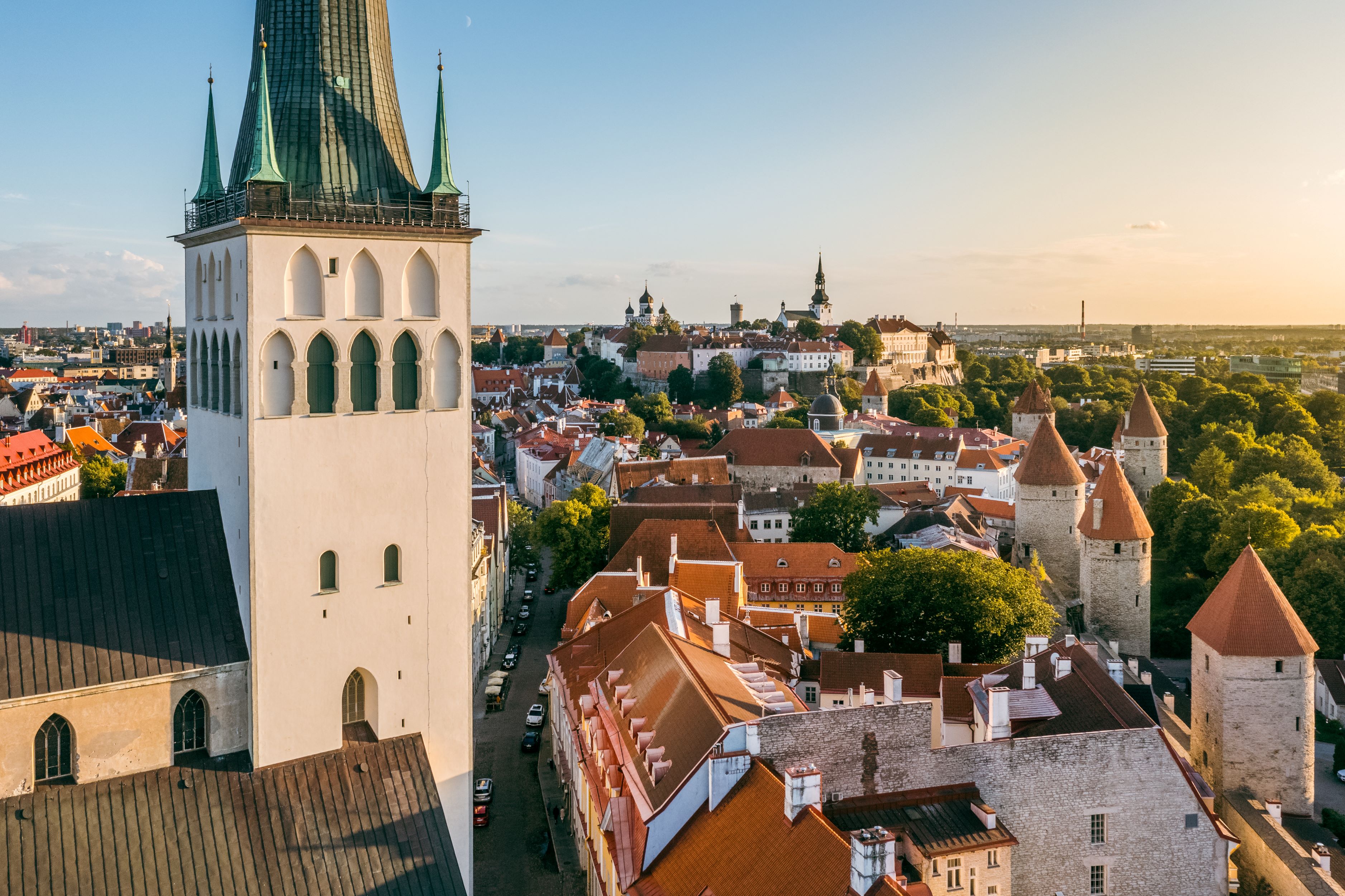
A journey through Kopli's colorful past and bright future
Explore Kopli on this self-guided walking route – a hidden gem of seaside views, industrial heritage, green parks, and vibrant culture.
Explore ruins and rebuilt areas, urban green spaces, and industrial beauty.
Situated on a peninsula jutting into the Baltic Sea, Tallinn's Kopli neighborhood has a fascinating industrial legacy that’s visible in its unique housing and city planning dating back to the early 20th century. Today, Kopli is an up-and-coming cultural hub that's home to a lively calendar of concerts and events, restaurants, cafes, bakeries, and shops.
This short but packed route can be done year-round. It offers an experience not found in many cities – one that takes you quite literally off the beaten track.
Get to know one of Tallinn's hidden treasures!
What to expect on the route:
- Main attractions: Kopli Lines, a restored residential district and seaside promenade, Kase Park, Põhjala tehas and its shops and restaurants.
- Distance: Around 2.5 kilometers
- Duration: Between 1 and 1.5 hours
- Season: Year-round
- How to get here and around: Trams no. 1, 2, and 5 go all the way to Kopli from Tallinn's city center. Once in the neighborhood, just use your feet!
- Suggested starting points: Vanasadama (tram line 2) or Balti Jaam tram stops (tram lines 1, 2 or 5)
- Green travel tips: Use public transport to get to Kopli, and refill your water bottle at the drinking water tap on the Kopli Lines promenade.
- More route details: Check out this map.
Kopli Lines
A historical neighborhood with a seaside promenade
Kopli liinid (Kopli Lines) is a charming neighborhood of wooden houses, originally built at the beginning of the 20th century. This area was once home to families who worked at the nearby shipyards.
During the Soviet era, the area fell into disrepair, and the original shipyard workers were replaced by a more colorful mix of residents. Probably the most famous person to grow up in Kopli is Tommy Cash, the musician and visual artist who represented Estonia in the 2025 Eurovision Song Contest with his hit song "Espresso Macchiato".
The restoration of the neighborhood began in the 2010s and is still ongoing. Houses with a sleek, modern appearance are completely new constructions, built on the sites of those that had burned down and could not be salvaged. Their black façades symbolize ash and the loss of the original structures. The white houses have been reconstructed around the original surviving stone staircases, preserving a fragment of their history. Meanwhile, several houses were still in a condition suitable for renovation; these have been carefully restored and painted in vivid shades of red, yellow, or green.
The renewed neighborhood is bordered by a lovely seaside promenade with playgrounds for children, fresh drinking water for both humans and their four-legged companions, and benches that offer a tranquil spot to enjoy the serene view of Tallinn Bay.

Photo author: Rea Kõiv
Kase Park
A once wild spot that has become a community gathering place
Named after the old birch trees that give the park a magical vibe, Kase Park is a fascinating piece of urban nature. Notice the large stones on the ground. These are naturally occurring boulders – a remnant of the last Ice Age. These stones have stood here in Kopli for over 10,000 years!
Not only does Kase Park have a rich prehistory, but it also has a colorful recent past.
Kopli is a rapidly evolving area with a lot of urban development and new housing. However, even as recently as 10 years ago, the area could be quite dodgy, with criminal activity being common. Kase Park was no exception and was once known by locals as the “run or die” park, where the safest way to traverse it was to run through as quickly as possible. Nowadays, it is a clean, quiet park loved by local families. The park has coffee machines, ample seating areas, and a skate park and playground for kids.

Photo author: Rea Kõiv
Põhjala tehas
From rubber boot factory to a bustling hub for culture and small businesses
Põhjala tehas (Põhjala factory) is a former industrial complex that has housed numerous factories throughout the years, most famously the Põhjala rubber factory, which primarily made rain boots.
Today, Põhjala is a vibrant cultural hub that houses many local designers and artisans. Take a look inside design and art studios, shop for clothes, freshly roasted coffee, or even designer baby accessories.
The area is home to one of the most popular bakeries in Tallinn – Karjase sai. Don’t be put off by the queue that often forms by the door. The wait is usually quick, and the pastries are worth it. For a more substantial meal, head to Kopli Köök, a popular lunch spot in the main building of Põhjala. The interior has an eclectic retro style that perfectly encapsulates the spirit of Kopli’s industrial past. Restaurant Barbarea, listed in Estonia's MICHELIN Guide, is a great spot for dinner. The restaurant works with local farms and uses as many organic ingredients as possible.
One of the most Instagrammable places in Põhjala is the ReaD bookshop, which sells new and used books in Estonian, English, and other languages. It is also a popular place for events such as book readings and lectures. It shares a space with Café Kiosk no. 3, which adds an extra level of coziness to this already charming space.

Photo author: Rea Kõiv
Step off the grid and into a neighborhood where every corner has a story.
Let Kopli surprise you on your next trip to Estonia. You can find more information about this self-guided journey through Kopli's peaceful seaside paths, colorful history, and buzzing creativity on the Visit Tallinn website.
What to see and where to eat in Tallinn's Kopli neighborhood

Get inspired
Last updated
22.10.2025